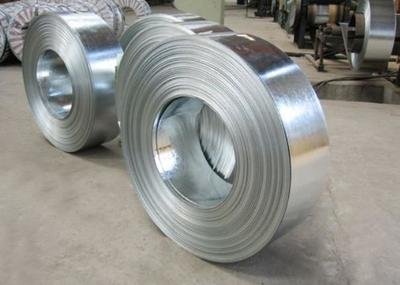Optimization of Heat Treatment Processes for Spring Steel and Its Importance
Oct. 14, 2024
Spring steel, as one of the crucial materials for manufacturing springs in machinery, directly correlates its performance indicators with the service life and reliability of springs. Among the various factors influencing spring steel properties, heat treatment stands out as a significant one.

1. Heat Treatment Processes for Spring Steel
1.1 Quenching
Quenching is the first step in the heat treatment of spring steel. Its main purpose is to heat the steel above the critical temperature and then rapidly cool it, transforming its structure into martensite to obtain high hardness and strength. The quenching temperature generally ranges from 820 to 870°C, with water or oil commonly used as the quenching medium. During quenching, it is crucial to control the cooling rate and select the appropriate cooling medium to ensure the desired strength and toughness.
1.2 Tempering
Tempering follows quenching as a necessary step. Its primary objective is to eliminate internal stresses and brittleness generated during quenching, enabling spring steel to achieve good toughness and ductility. The tempering temperature typically falls between 350 and 550°C. Higher temperatures result in better toughness but faster strength reduction. The tempering time must be sufficient to ensure uniform temperature and full recovery of the quenched structure.
1.3 Nitriding
Nitriding is a commonly used surface treatment method aimed at enhancing the hardness and wear resistance of spring steel. It involves reacting nitrogen with the steel surface at high temperatures and pressures, forming a hard nitride layer on the surface to improve hardness and wear resistance.
1.4 Stress Relief Annealing
Stress relief annealing is a special type of tempering process designed to eliminate stresses generated during spring steel usage and stabilize its structure. It is typically performed after processing, with temperature and time selected based on the spring steel material and processing technique. Stress relief annealing reduces deformation and cracking, extending service life and improving reliability.
2. Importance of Heat Treatment Process Optimization for Spring Steel
2.1 Extending Service Life and Improving Reliability of Springs
During usage, springs undergo numerous deformations and recoveries. Therefore, their fatigue resistance and deformation resistance are crucial performance indicators. These indicators can be achieved through optimization of heat treatment processes for spring steel.
2.2 Enhancing Production Efficiency and Reducing Costs
Optimizing heat treatment processes for spring steel can optimize its performance indicators, reducing defective and repair rates in production. Simultaneously, reasonable heat treatment processes can decrease material consumption and shorten processing time in the workflow, improving production efficiency and lowering production costs.
2.3 Improving Product Quality and Market Competitiveness
Heat treatment process optimization can enhance spring steel's performance indicators and product quality, boosting market competitiveness. High-quality spring steel offers longer service life and more stable performance, favored by customers. Additionally, high-quality products bring higher economic benefits and a good reputation to enterprises.
2.4 Promoting Resource Conservation and Environmentally Friendly Development
Through reasonable heat treatment processes for spring steel, material waste and energy consumption can be reduced, achieving resource conservation. Furthermore, optimization of heat treatment processes can decrease emissions of harmful gases like carbon dioxide and environmental pollution, promoting environmentally friendly development.
Conclusion
In summary, optimal heat treatment processes can significantly increase spring steel's elastic modulus and yield strength while decreasing elongation, improving spring performance, and extending its life.









